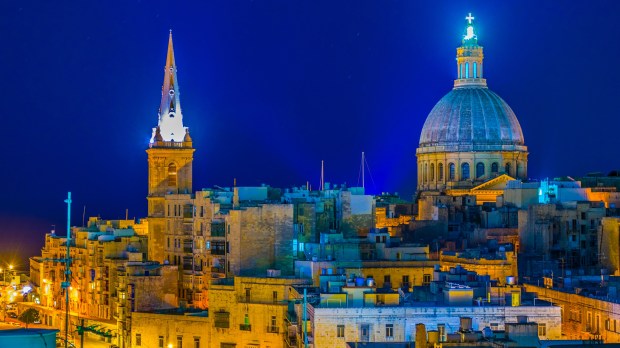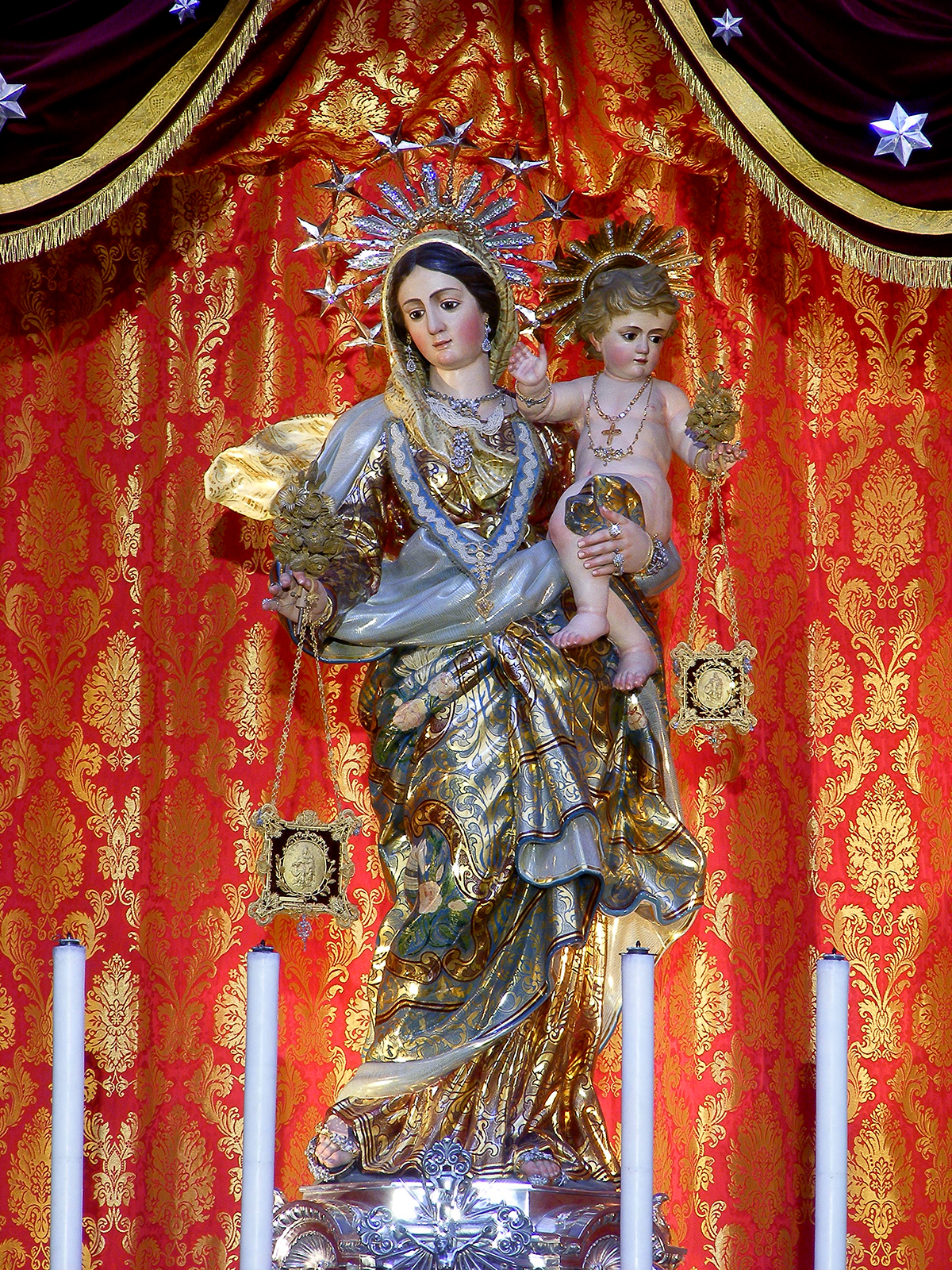Article Co-authored by Jean Pierre Fava, of the Malta Tourism Authority; and Mark Agius, Rector of the ArchConfraternity of Our Lady of Mount Carmel Valletta
One of the most widespread Marian devotions in the Maltese Islands is that to Our Lady of Mount Carmel.
The Houses of the Carmelite Friars and the Discalced Carmelites formed the central nuclei for the promotion of all forms of devotions related to the Madonna of Mount Carmel. The feast of Our Lady of Mount Carmel was instituted by the Carmelites within their order between 1376 and 1386 to celebrate the victory achieved by their order in obtaining the approbation of its name and constitution from Honorius III on January 3, 1226.
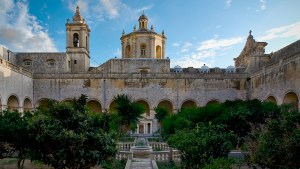
Read more:
The miraculous story of the Maltese Lady of the Grotto
The feast was celebrated on July 16, because on that date in 1251, according to Carmelite tradition, the scapular was given by the Blessed Virgin to St. Simon Stock. The celebration of the feast of the Madonna of Mount Carmel on July 16 received the approval of Pope Sixtus V in 1587. Moreover, the Sacred Congregation of Rites, at the request of the Queen of Spain on November 21, 1674, extended its celebration to all countries under Spanish rule. This same concession was granted in 1679 to the Hapsburg Empire and the Kingdom of Portugal. On September 24, 1726, it was extended to the entire Latin Church by Benedict XIII.
The Carmelites in Malta
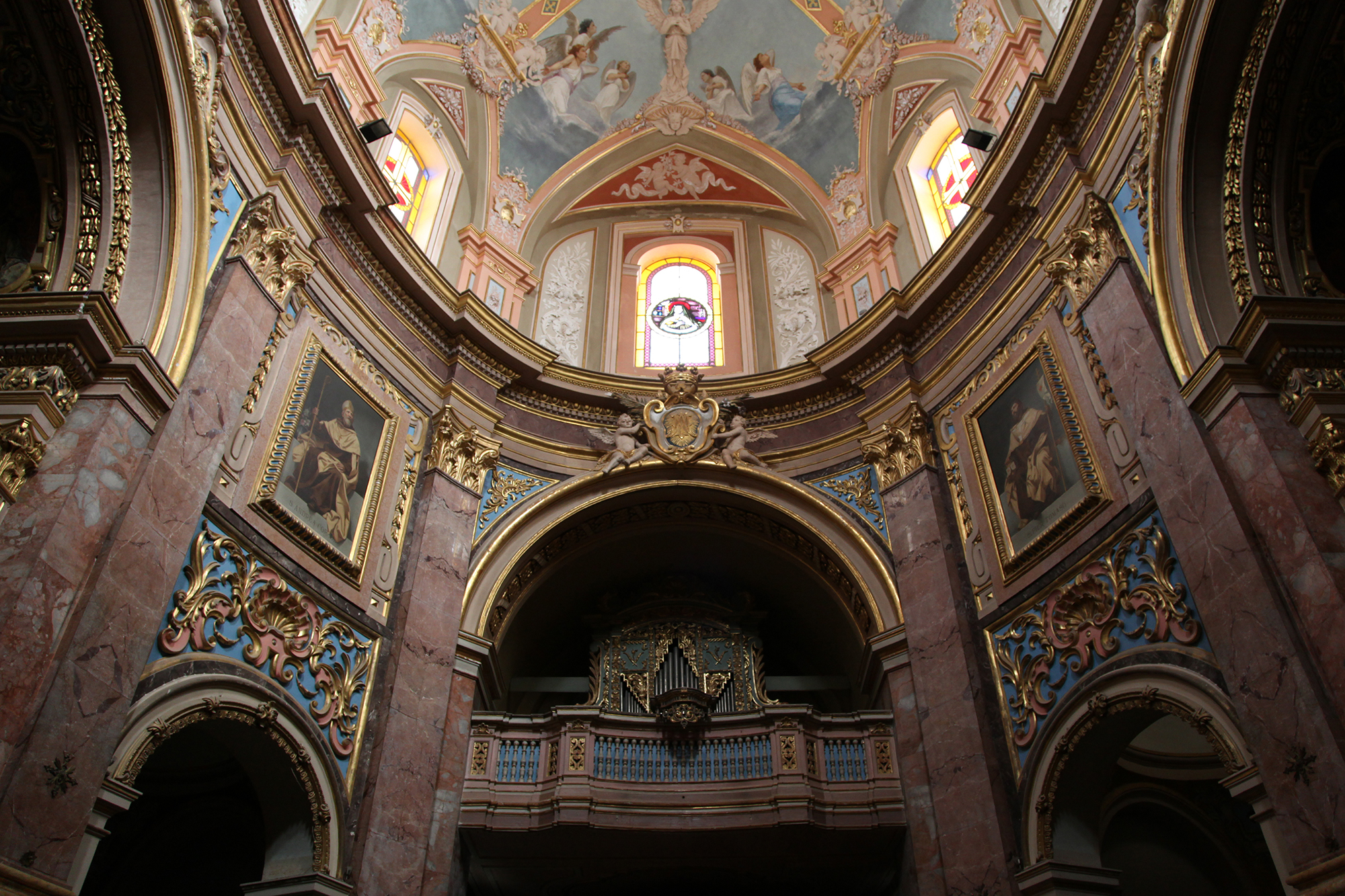
The Carmelites first came to Malta from Sicily in 1418 and they settled in the church of the Annunciation in the countryside on the outskirts of the ancient capital of Mdina. The estate was given to them by Margaret d’Aragon, a member of the Spanish royal house, who offered the chapel and surrounding land of Lunzjata (derivative of Annunzjata – Annunciation in Maltese), outside Rabat, to any religious order that would undertake to perform the incumbent religious duties. The Carmelites accepted the offer. Afterwards, priories were opened in Valletta, Vittoriosa, Mdina, Balluta – Sliema, Santa Venera, Fgura and Fleur-de-lys. The Carmelites became well known throughout the Island by means of a customary procession held on the feast of the Annunciation. The Chapter of the Mdina Cathedral would proceed to the Lunzjata Carmelite Church outside Rabat, and droves of people from all over the island joined the celebrations. Also, the Carmelites were the first friars to build a church in the new city of Valletta, in 1586, which increased their popularity. This church eventually became the main shrine of Our Lady of Mount Carmel. The first church was designed and built by Gerolamo Cassar, a Maltese architect, who also built the magnificent Saint John’s Conventual Church, now the Diocesan Co-Cathedral.
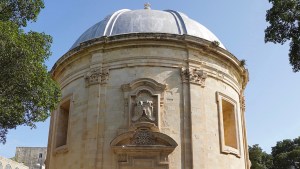
Read more:
When the plague hit Malta, the Knights made a promise: A Marian miracle followed
The altarpiece of the Valletta Church (most likely brought from Sicily) depicts Our Lady of Mount Carmel, who gives the scapular to St. Simon Stock and comforts the Holy Souls in Purgatory with her milk, which is expressed from her breasts by Baby Jesus, whom she holds in her arms. This painting also depicts St. Agatha, one of the patron saints of Malta. In a very short period, the Maltese came to believe that the image was miraculous, and today, it is still held in great devotion. In fact, this beautiful painting was the first ever painting of Our Lady in the Maltese Islands to be crowned by the Vatican Chapter. This occurred in 1881. Later, the church was made a minor basilica in 1895. The Valletta shrine was badly damaged by aerial bombardment during the Second World War, so it was rebuilt as a monumental church that still dominates the Valletta and Grand Harbour’s skyline. Indeed, looking up at the dome from the inside is breathtaking. Beside the shrine is an Oratory belonging to the Confraternity of Our Lady of Mount Carmel. The statue it houses is the first ever statue of Our Lady of Mount Carmel in the Maltese Islands. Its authorship was unknown until a short time ago. Now it is being attributed to Pietro Paolo Troisi, a 17th-century sculptor. This historic statue has recently been restored by Valentina Lupo and her excellent team from the Maltese company Atelier del Restauro.
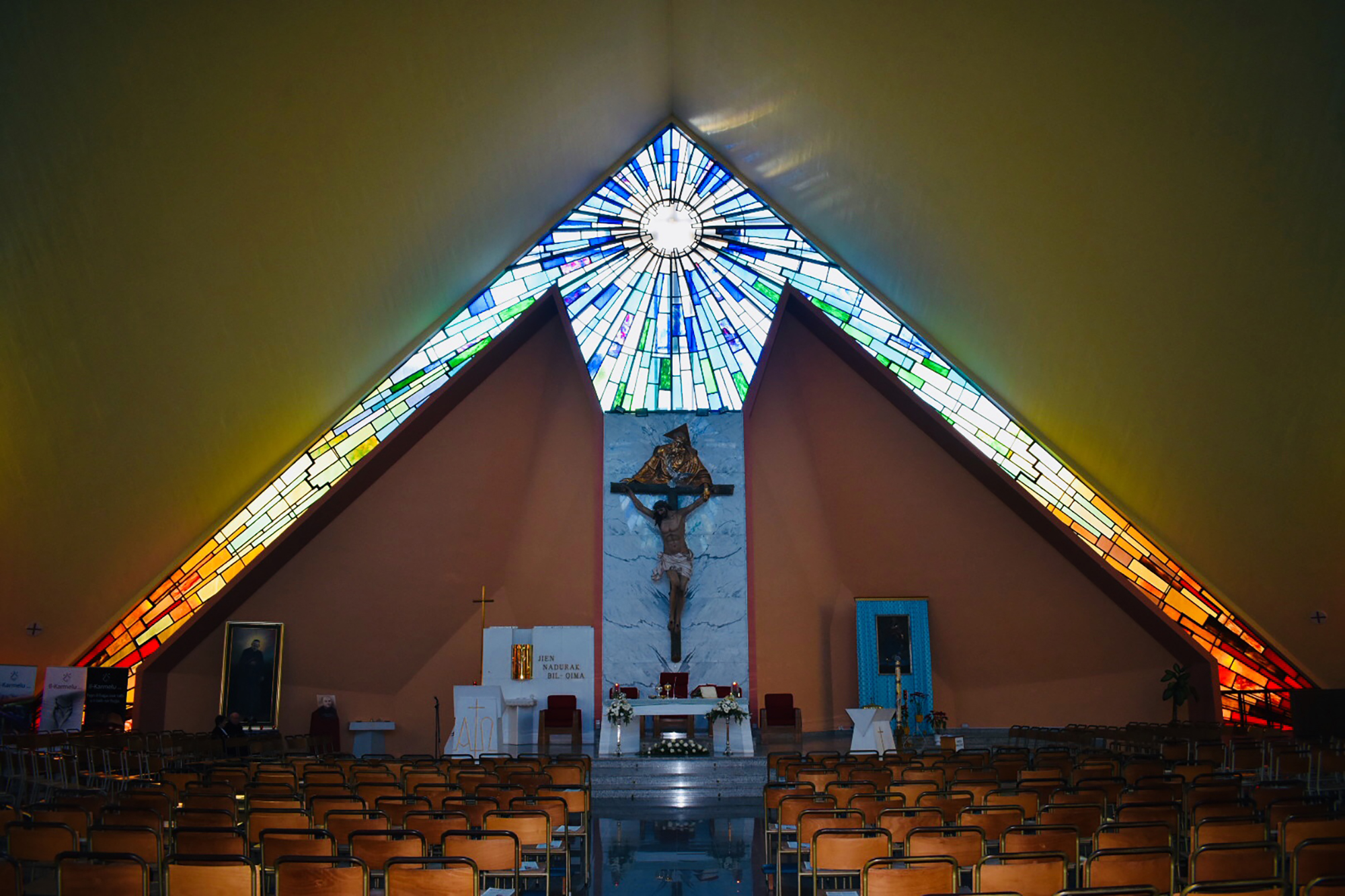
There are also many other Churches in Malta which are Officiated by the Carmelite Order and in which devotion to Our Lady of Mount Carmel is promoted. For instance, the church in Mdina is an outstanding specimen of the Baroque style. It is dedicated to the Annunciation. The church in Balluta is a modern Neo-Gothic church which was originally founded by the Valletta Confraternity of Our Lady of Mount Carmel as a chapel for Summer holiday residents and then, grew into a friary and a parish. There are two churches in Santa Venera, a modern one and another built in the 17th century.
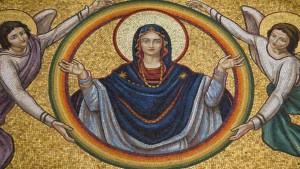
Read more:
How the Assumption saved Malta during WWII
Another modern church is that of Fleur-Des-Lys, and an ultra-modern one in Fgura, which has a spectacular statue on its façade, the work of the Maltese Artist Vincent Apap. It represents Christ rising in glory from the cross. The Discalced Carmelite church in Birkirkara is the Maltese shrine of Saint Theresa of Lisieux, and has a beautiful statue of Our Lady of Mount Carmel enthroned giving the scapular to Saint Simon Stock while Saint Teresa of Avila offers her heart to Jesus.
Our Lady of Mount Carmel keeps Malta under her mantle
There is one very well-known story regarding the Valletta Shrine of Our Lady of Mount Carmel and San Ġorġ Preca (St. George Preca). On the 16th of July, the feast day of Our Lady of Mount Carmel, when San Ġorġ was very young, he was walking on the edge of the seashore and accidentally fell into the water. He would most likely have drowned if it had not been for a boatman who was rowing some musicians across the harbor to participate in the celebrations taking place in the Carmelite Church. The boatman jumped into the water and saved the boy. Years later, when Ġorġ had become a young priest, he was walking by an old peoples’ home when a nun informed him that one of the residents was passing away and a priest was needed to administer him the Last Rites. The person concerned was none other than the boatman who had saved him many years before. San Ġorġ became a Carmelite Tertiary and a great promoter of the Brown Scapular.
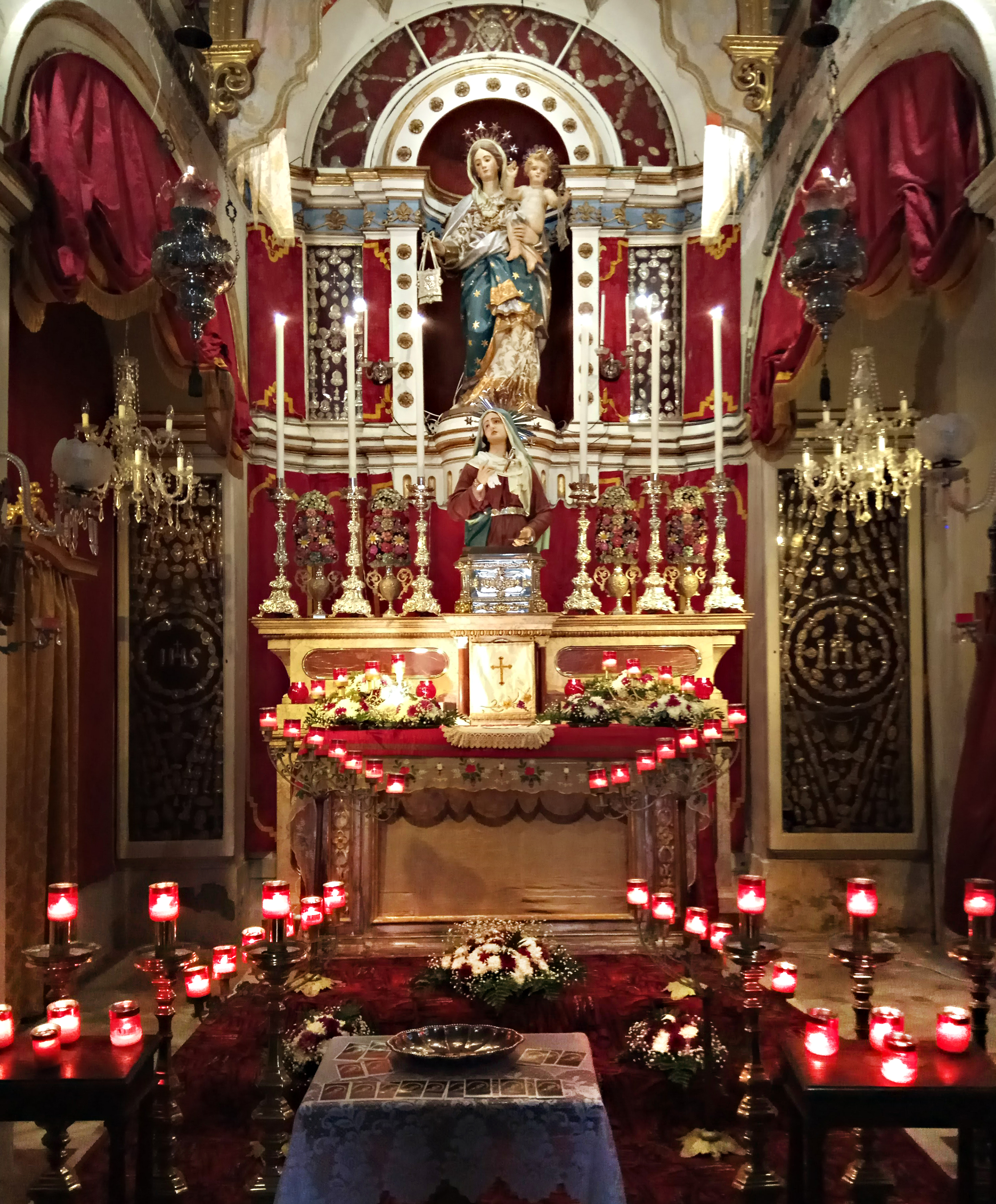
This Marian devotion, like that of Our Lady of Graces, was closely associated with popular prayer for the Souls in Purgatory. This relationship is clearly seen in the special intercession of Our Lady of Mount Carmel on behalf of those who wear the Brown Scapular and particularly the concessions contained in the renowned Bolla Sabatina. This aspect is evident in some of the earliest iconographic representations available in Malta, such as the painting at Mdina’s friary, at the parish church of Qrendi, and elsewhere, where the presence of the Brown Scapular is central. Numerous Maltese are enrolled in the Brown Scapular, often shortly after birth, when they are presented to Our Lady at the Valletta shrine. Also, many become members of the Third Order of Carmel. The Devotion of the Brown Scapular was further popularized by a sodality, which would organize to send a lay brother into the villages of Malta to enroll persons in the scapular.
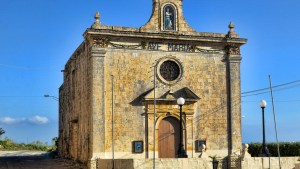
Read more:
A close look at the ancient Sanctuary of the Immaculate Conception of Qala, in the Maltese islands (Gozo)
The Virgin of Mount Carmel introduced into Malta another Marian devotion that is also promoted by the Franciscans, namely the Seven Joys of Our Lady. This special devotion, which is held on the Wednesdays between Easter and Pentecost, is called ‘The Wednesdays when Our Lady Gives Audience to her People’ (‘Mercoledí di Udienza‘ [Italian], in Maltese still known as ‘L-Erbgħat ta’ l-Udjenza‘ – Wednesdays of the Audience). In Malta, it is thought to be linked with praying to Our Lady to drive away the Plague, and was probably introduced from Sambuca in Sicily when the Carmelites in Malta were part of the Sicilian province. This devotion in Malta found its expression in special religious services, including the celebration of a Holy Mass and a sermon, throughout the seven successive Wednesdays between Easter and Pentecost.
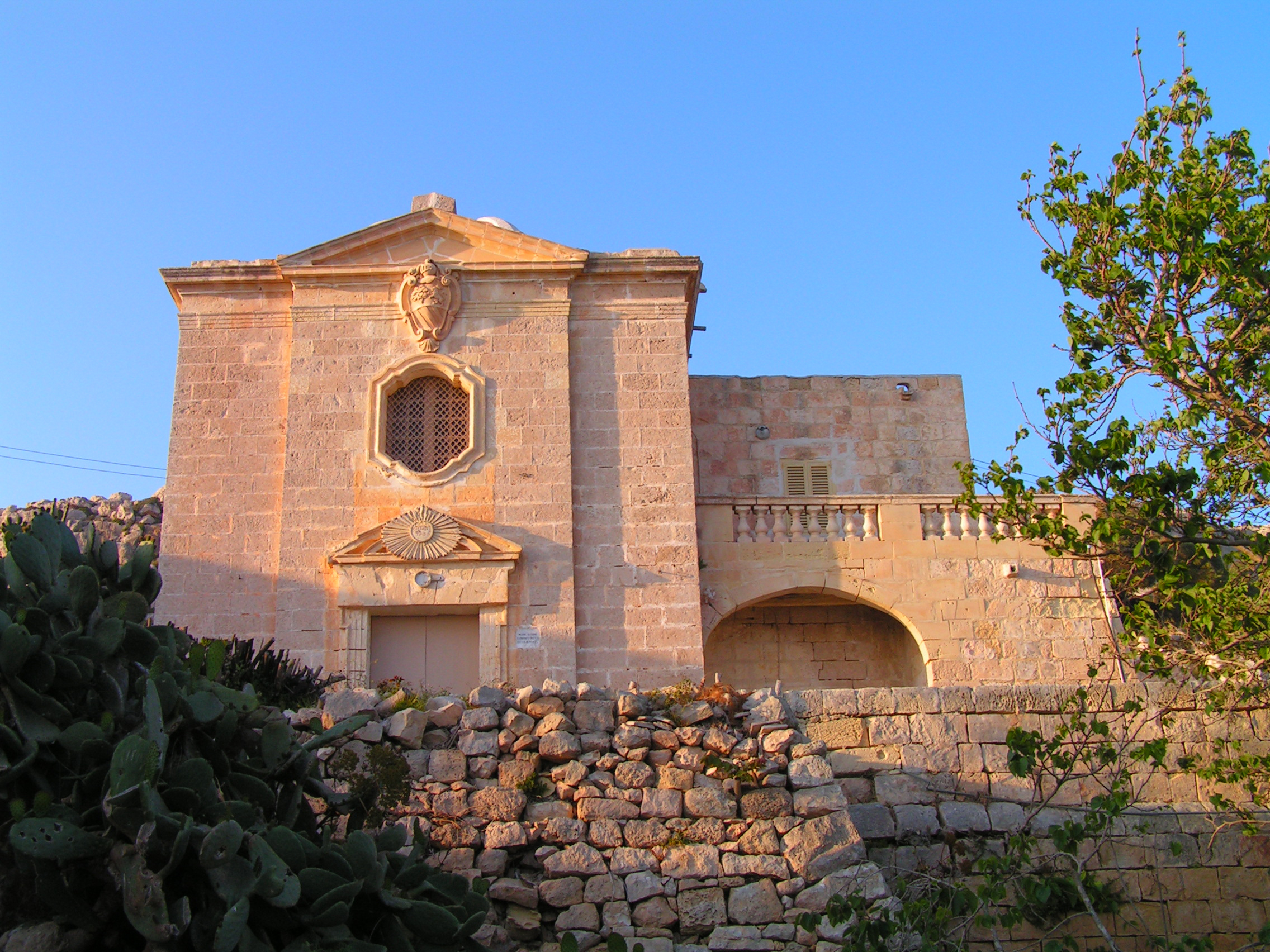
While this devotion is most important in the Shrine of Valletta, it was introduced in Birkirkara among other localities, during the last decades of the 17th century.The Valletta priory also holds another small painting of Our Lady of Mount Carmel. It is known as Our Lady of the Sick, since it is taken to homes of persons suffering from disease, and prayers to Our Lady are recited for their recovery. This painting is in a silver frame, and the space between the frame and the image of the Blessed Virgin is covered with ex-votos. The number of graces received from Our Lady of Mount Carmel is innumerable, as are the silver ex-votos that decorate the Oratory of Our Lady of Mount Carmel, which is adjacent to the basilica.
Two churches run by diocesan clergy are also linked to prodigious happenings. The parish of Gżira owes its origins to an incident when some drunken Royal Navy sailors threw a stone at a wayside shrine of Our Lady of Mount Carmel. The stone stuck in the glass of the shrine and never hit the picture. The stone and the picture are still preserved in the church, and the picture is referred to as ‘Our Lady of the Stone’. The rural church of Our Lady of Mount Carmel in Fawwara (Fawwara means a spring) commemorates a spring that was formed during a drought, after Ġirolama Ċiantar , who owned the land locally, made a vow to build a chapel if her crops survived the drought. Today, the water still flows, and is so abundant that it is linked to Malta’s water supply! It is said that in medieval times, when there were still Muslim overlords in Malta, a number of young Maltese girls were murdered in Fawwara because they would not give up their Christianity. Hence, the present painting of Our Lady of Mount Carmel in the Fawwara church includes St. Catherine to represent the martyrs of the past. The Church at Fawwara is administered by the Confraternity of Our Lady of Charity of Valletta, who annually organize a feast including the distribution of scapulars.
Malta conveys Our Lady’s graces beyond its shores
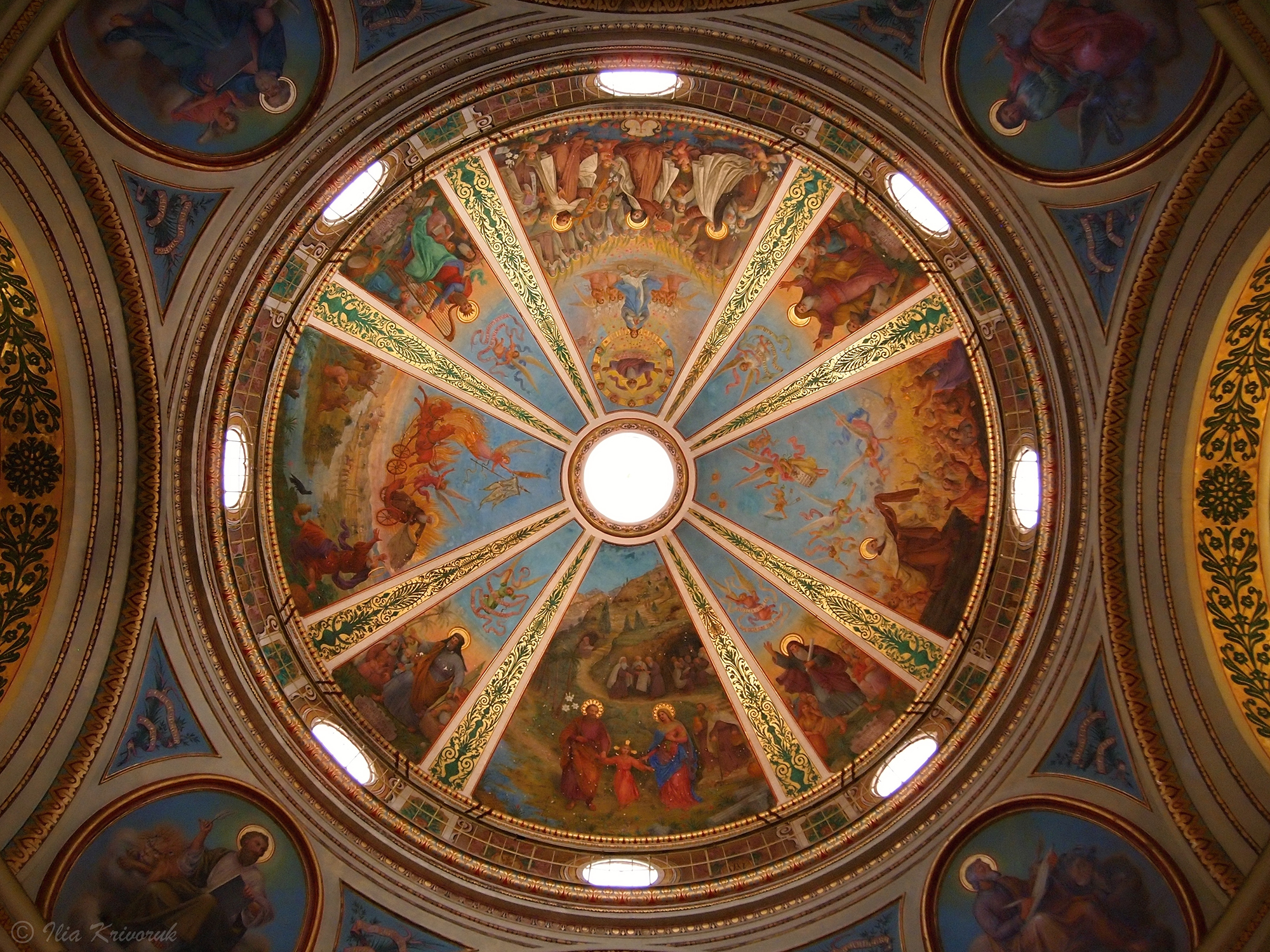
So central has the devotion to Our Lady of Mount Carmel become for the Maltese people that Malta has become a fountain of Providence, helping the Carmelite Order in all the four corners of the world. This assistance enabled the Carmelites to save for posterity some of the most ancient and sacred Carmelite holy sites. This was also possible because both the Maltese Carmelites and the other Orders of Friars survived the expropriations of property that the religious orders suffered across Europe during the period of the Reformation, the Enlightenment, the French Revolution and the Unification of Italy. The Orders survived because Malta passed from the Knights of Saint John to the English, and the British Government insisted with the Vatican that the Maltese friars be made independent provinces, rather than remaining dependent the on mother-houses of Sicily. Thus Carmelites of Malta helped to save several of the Order’s most historic convents.
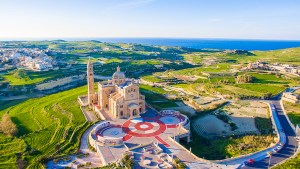
Read more:
The miraculous story of Our Lady of Ta’ Pinu National Shrine, in Gozo
For instance, during the Knights’ period, the Discalced Carmelite Convent of Cospicua, which contains the first-ever church dedicated to St. Teresa of Avila, was founded as an international college to train Carmelites as missionaries to the Near East. As a consequence, when after the Napoleonic Campaign in Egypt and Palestine the Monastery of Mount Carmel was destroyed by the Turks, it was Maltese Carmelites who rebuilt the Convent on Mount Carmel, the cradle of the Order. The dome of the Stella Maris Church of Mount Carmel resembles a Maltese church dome, since it was painted by the Maltese Luigi Poggi. Also, the English convent of Aylesford, where St. Simon Stock had lived, and may have experienced the Scapular Vision in 1251 (the other possibility is that the vision occurred in Cambridge), was also lost in the Reformation, but in 1951, the Order had the possibility to buy it back. The Maltese contributed funds for this purpose. I [Dr. Mark Agius] still remember my mother regularly sending two shillings and six pence to the Carmelites in Faversham, Kent, and Maltese friars going to England to provide manpower to support the English Province. And this is not all — The Holy Infant of Prague is in the city’s Church of Our Lady of Victories. When Emperor Joseph II made the Discalced Carmelites leave that church, it was the Knights of Malta who guarded and protected this important shrine, until the Carmelites returned in 1992.
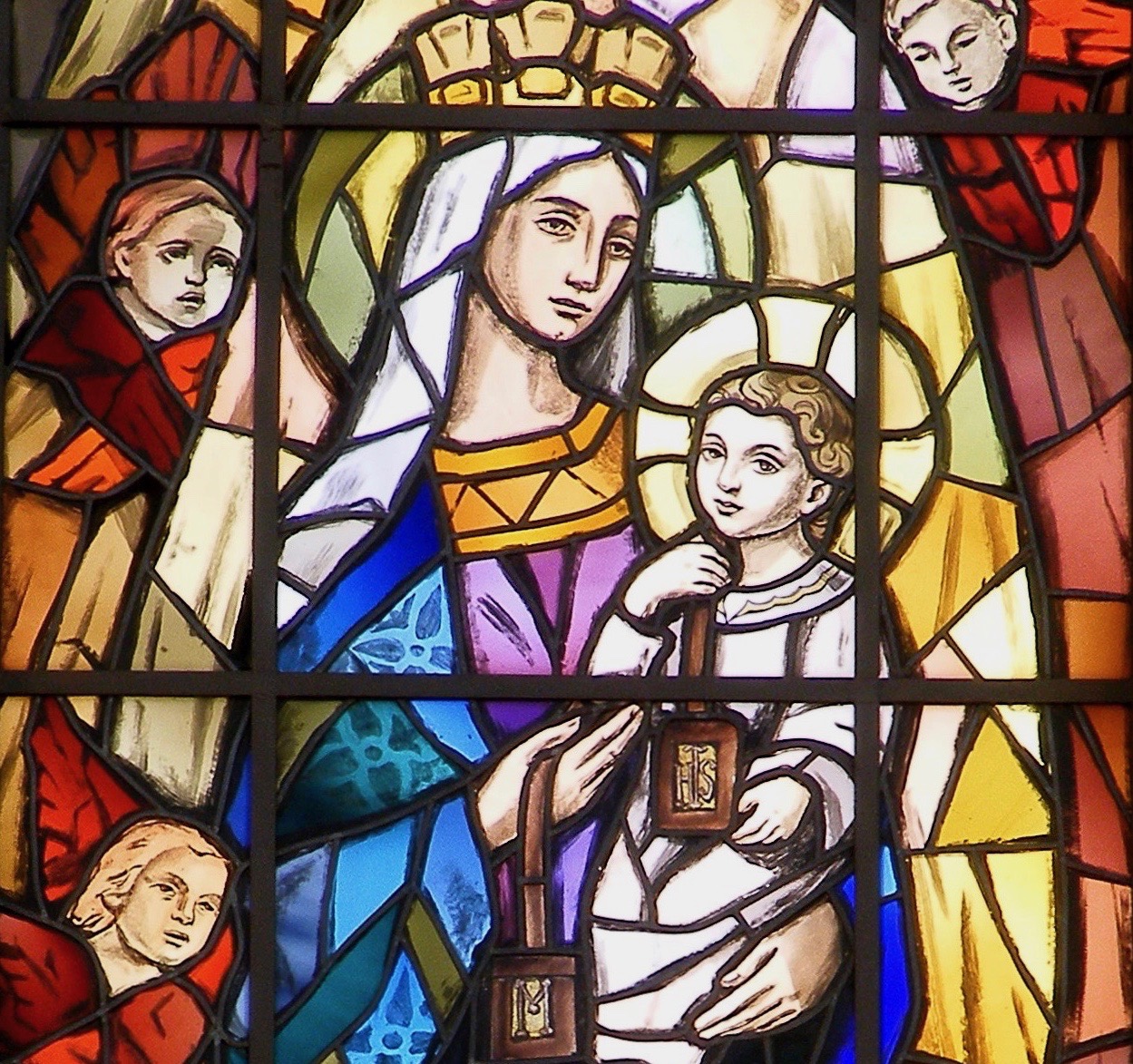
A final thought
Malta is an island that occupies a very strategic position in the Mediterranean Sea. It is blessed with deep water harbors, and from time immemorial the Maltese earned their living through maritime activities of all kinds. They were fishermen, tradesmen, adventurers, corsairs and above all fine mariners. In the Mediterranean littoral, Our Lady of Mount Carmel is revered as the Queen of the Sea, the patron of sailors and fishermen. She is the Star of the Sea who guided them on their perilous and risky voyages. No wonder that her popularity was always so high and all-embracing. Yes, Our Lady of Mount Carmel has struck deep roots in the hearts and minds of the Maltese people.
Dr. Mark Agius is the Rector of the Archconfraternity of Our Lady of Mount Carmel, Valletta. He is also a medical doctor, and practiced as a G.P., an Associate Specialist Psychiatrist and Clare Research Associate in Clare College Cambridge. Dr. Agius has retired from all medical practice and research.
Make sure to visit the slideshow below to discover the most beautiful Carmelite images in the Maltese islands.
References
Agius M. Kif ikkontribwiet Malta matu liz-zmien biex issalva s-siti ewlenin tal-Karmnu madwar id-Dinja (How Malta contributed throughout the ages to save unique sites around the World).Programm tal-Festi Solenni Madonna tal-Karmnu (Programme of the Solemn Feasts of Our Lady of Mount Carmel). Valletta. 2018
Attard G., Camilleri C., Vella Brincat R. Vinea Carmeli. Carmelite Priories and their Churches in Malta. Malta. 2020
Borg Gusman V. Marian Devotion in the Maltese Carmelite Province during the 17th and 18th Centuries. Marian Devotions in the Islands of St. Paul – The Historical Society. Malta. 1983. [http://maltahistory.eu5.net/md/MD24.html] Accessed in October / November 2020
Borg Gusman V., Tonna E. L-Erbgħat tal-udjenża(Audience Wednesdays). Carmelite Order of Malta. Malta. 1979
Borg V. Our Lady of Mount Carmel. Marian Devotions in the Islands of St. Paul – The Historical Society. Malta. 1983. [http://maltahistory.eu5.net/md/MD15_Carmel.html] Accessed in September / October 2020.
Farrugia J. Il-knisja tal-Madonna tal-Karmnu – Fawwara, limiti tas-Siggiewi. (The church of Our Lady of Mount Carmel – Fawwara, limits of Siggiewi). Kappelli Maltin (Maltese Chapels). [https://www.kappellimaltin.com/Il-Kappelli/Sett06/SGW_Karmnu_Fawwara/sgw_karmnu_fawwara.html] Accessed in December 2020
Gzira – Parish Church of Our Lady of Mount Carmel. Archdiocese of Malta. [https://church.mt/parishes/gzira/] Accessed in December 2020
Feast of Our Lady of Mount Carmel. Order of the Brothers of the Most Blessed Virgin Mary of Mt. Carmel. [https://ocarm.org/en/content/ocarm/feast-our-lady-mount-carmel] Accessed January 2021
Province of Malta. Order of the Brothers of the Most Blessed Virgin Mary of Mt. Carmel. [http://www.ocarm.org/en/content/ocarm/province-malta] Accessed in September / October 2020
Sammut L. Is-Santwarjutal-Madonna Tal-Karmnu (The Sanctuary of Our Lady of Mount Carmel). Malta.1952
Spiteri M. (aka Kilin). Djar is-Sultana. Malta. 1969
